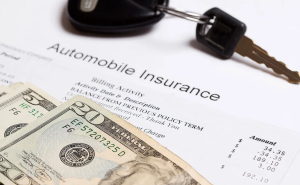Decoding Car Insurance: What’s Under the Coverage Umbrella?
3 min read
Introduction: Car insurance serves as a financial safety net, providing protection against a variety of risks. Understanding the breadth of coverage is essential for making informed decisions and ensuring comprehensive protection. This article delves into the intricacies of car insurance, unraveling the layers of coverage and shedding light on what policies typically encompass.
Liability Coverage: Safeguarding Against Third-Party Claims
Begin by exploring liability coverage, the cornerstone of car insurance. Explain how this component shields drivers from financial responsibility in the event of an accident where they are at fault. Emphasize the dual nature of liability coverage, encompassing both bodily injury and property damage.
Collision Coverage: Tackling Repairs After Accidents
Move on to collision coverage, outlining its role in covering repair costs for your vehicle in the aftermath of a collision. Illustrate scenarios where collision coverage proves invaluable, such as accidents involving other vehicles or stationary objects.
Comprehensive Coverage: Beyond Collisions
Extend the discussion to comprehensive coverage, highlighting its broader scope. Explore how comprehensive insurance steps in to cover non-collision incidents like theft, vandalism, natural disasters, and encounters with wildlife. Showcase the versatility of comprehensive coverage in safeguarding against a myriad of unexpected events.
Uninsured/Underinsured Motorist Coverage: Protection Against the Unforeseen
Shed light on the importance of uninsured/underinsured motorist coverage, elucidating its role in scenarios where the at-fault party lacks sufficient or any insurance. Emphasize how this component ensures that you’re not left financially vulnerable in such situations.
Medical Payments Coverage: Addressing Health-Related Expenses
Discuss the medical payments coverage aspect of car insurance, focusing on its role in covering medical expenses for you and your passengers, regardless of fault. Illustrate how this component contributes to a holistic protection plan.
Personal Injury Protection (PIP): Comprehensive Health Coverage
Introduce personal injury protection (PIP), an extension of coverage that provides a more comprehensive solution for medical expenses, lost wages, and other related costs. Explain the variations in PIP requirements across different states.
Rental Car Reimbursement: Keeping You on the Move
Highlight the convenience of rental car reimbursement coverage, showcasing how it ensures uninterrupted mobility by covering the cost of a rental vehicle while your car is being repaired.
Gap Insurance: Bridging the Depreciation Gap
Conclude the coverage exploration with gap insurance, emphasizing its relevance in addressing the depreciation gap. Discuss how gap insurance can be particularly beneficial for individuals with new cars or those financing their vehicles.
Conclusion: Car insurance is more than just a legal requirement; it’s a comprehensive shield against the uncertainties of the road. By decoding the various components of coverage—from liability and collision to comprehensive and beyond—this article equips readers with the knowledge to navigate the insurance landscape effectively, ensuring their policies align with their unique needs and provide a robust safety net on their journeys.












